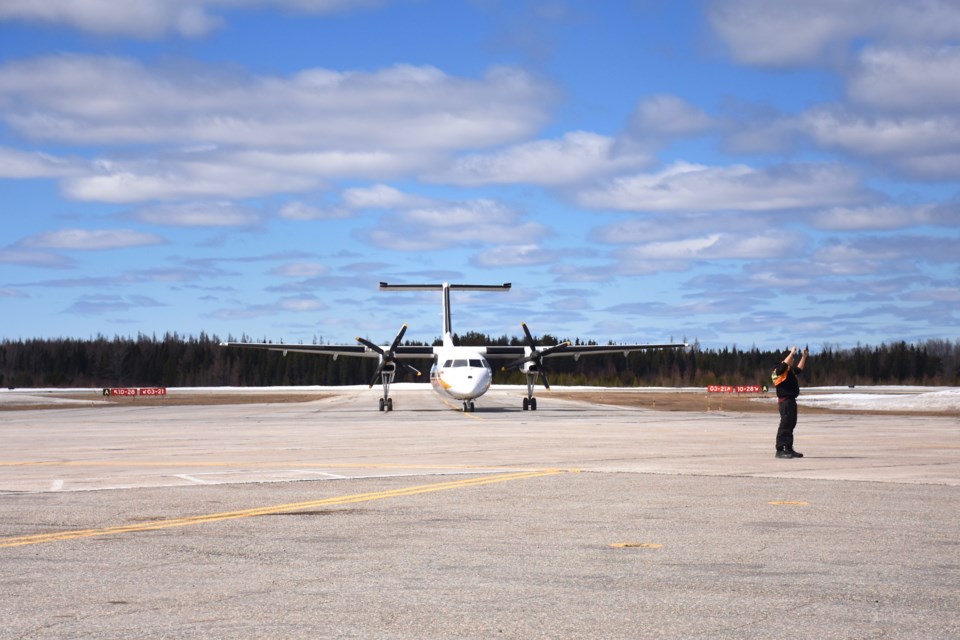After Eabametoong First Nation, also known as Fort Hope, declared an emergency due to a smoke from forest fires last week, more than 150 people have been evacuated to Timmins.
Evacuation of the most vulnerable people started last Tuesday, Aug. 11.
As of Monday, Aug. 17, there are 158 evacuees staying at Ramada Inn in Timmins. The majority of them are children under 12 and the rest are from 14 to 70 years old, said fire chief and emergency management co-ordinator Tom Laughren.
He said Timmins had 168 people over the weekend but some left to Thunder Bay in order to reunite with their families, bringing the number of evacuees down to 158.
It’s not known how long evacuees will stay in Timmins. Laughren said the smoke at Fort Hope isn’t as impactful as it was last week but the fire, which is at 6,678 hectares in size, isn’t under control yet.
He also said about 345 people were evacuated to Thunder Bay and about 90 to Kapuskasing.
“That’s a call that’s made by chief of Fort Hope, Chief Yesno,” Laughren said. “It will be in relation to the behaviour of the fire and the potential for smoke in the community … It’s not fire there, it’s smoke from a couple of fires that are affecting the community. So, it’s mainly young children you don’t want in the smoke or elderly people with health issues they’ve evacuated out.”
All COVID-19 safety precautions, such as maintaining physical distancing, wearing masks and washing hands, have been put in place for the evacuees at the hotel, Laughren said.
“The community is very well-versed. They have been practicing that in their home community, so what they’re doing here is not a lot different than what they were doing in their own community,” the fire chief said.
“We have security in place, we have volunteers from the community who do foot patrols and help out on the security side. We have healthcare access, either in the hotel or externally, with a doctor and a nurse. We have mental health support in place.”
The emergency group has regular communication updates and calls with other host communities as well as with Chief Yesno twice a day, Laughren said.
Timmins has been a host community for evacuations for a number of years.
In 2019, more than 750 evacuees from Kashechewan were housed in Timmins for about seven weeks during the spring breakup.
Last summer, people from Pikangikum First Nation and Keewaywin First Nation evacuated due to forest fires were in the city for two weeks each.
“It’s about willingness to do it and having resources in place to be able to do it. In Timmins, we’ve got a really good evacuation team, well-versed. Each time we learn and each time we get better at it," he said.
While council was laying the groundwork to be a host community for 2020 First Nations evacuations, when Kashechewan residents relocated during the spring break up they went to higher ground on their traditional hunting territory due to COVID-19 concerns.
According to the city of Timmins Aug. 13 news release, Timmins hasn’t been asked to be a host community for Red Lake, where a forest fire, Red Lake 49, forced people to leave the community. According to Red Lake’s Aug. 14 news release, the fire is under control now.
“When you look at Red Lake, the bulk of them did leave in their own vehicle. They have road access. I suspect because of time of the year, they were able to house in communities in closer proximity to Red Lake. Timmins, from a drive perspective, we’re probably 17-18 hours away, so I think that would be a little bit of a stretch,” Laughren said. “It doesn’t mean anything. In this case it means we weren’t needed from Lake Red’s perspective but we were needed from Fort Hope’s perspective.”
“We have good leadership from within the community to support us as we host the community. And from Timmins perspective, to be able to help your neighbours is a good thing. When people are in time of need or trouble, for communities to step up is well worth it."



